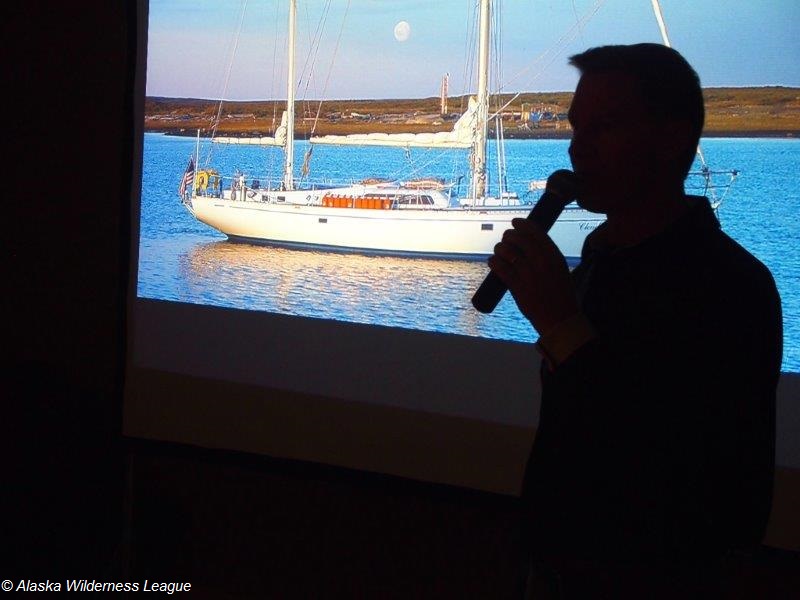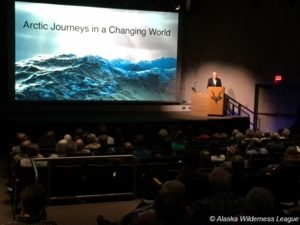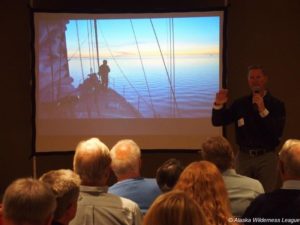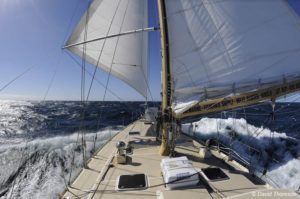David Thoreson Shares His Arctic Journey

Photographer and sailor David Thoreson recently appeared at venues across New Jersey, and in St. Louis, Missouri, to present Arctic Journeys in an Era of Climate Change: Stories and Photos, speaking about his travels and firsthand observations of how climate change is impacting the Arctic.
David witnessed up close and personal how a warming Arctic has resulted in a dramatic reduction in sea ice, and that reality played a huge role in his successfully navigating the Northwest Passage in both directions in 2009. David has since been inspired to share his stories with others to motivate action on climate chance and protecting the Arctic, and his work has been featured far and wide, from PBS and the Smithsonian to a recent TED Talk.
Matthew Drew is a student at Monmouth University and attended the presentation there; we’re happy to share his experience taking an “Arctic journey” with David!
Matthew Drew, Monmouth University
To the outsider, climate change may seem to be a bunch of numbers proving that temperatures and water levels are rising, or accusations of pollutants in our water or in our air. Over this past week, a Mr. David Thoreson visited Monmouth University to speak about just that. A world renowned sailor, David has so far been the only American to sail the Northwest Passage in both directions. He has circumnavigated the Americas, sailed to Antarctica, and spoken all over the world about climate change and how it will (and is!) affecting us today. Mr. Thoreson doesn’t befuddle his listeners with meaningless numbers or quotes from the government – he speaks from his experience of his adventures, and he speaks from the heart.
When I attended David’s lecture at Monmouth University, I was incredibly moved by the insight that he provided to the students and faculty. He showed us his first hand experiences of sailing around the world, especially the arctic. His eye-opening photographs prove there is something incredibly wrong in the most remote places in the world. The pictures he was hoping to take of the pristine environment were nonexistent. Instead, his pictures have been brought as evidence of climate change. He told us stories of people already dealing with erosion to their homelands due to rising water levels, the strange migration of polar bears, and the loss of habitat for many arctic animals. There was no persuasion that climate change was real or if it will happen to us. He showed us it is happening, and we need to do something about it.
He was also incredibly excited to share with us that the day before Shell Oil Co. announced it would be ending its program to drill for oil in the Arctic. The move would protect millions of hectares of land and sea from pollutants and human disturbance. As ecstatic as he was, David said there was much more work to be done.
I asked him during his Q&A what the younger generations can do to help protect the environment, especially if money is an issue, and he came up with the most brilliant answer.
“Spread stories,” he said. “It’s important to get the word out that climate change is real and tangible. Tell your friends you met a sailor from Iowa that’s committed to spreading the word of climate change from his experiences in the Arctic and Antarctic, and share my story. Make it your own.”
I would like to thank the Alaska Wilderness League, Monmouth University, and Mr. Thoreson himself for bringing such a wonderful presentation to MU.



